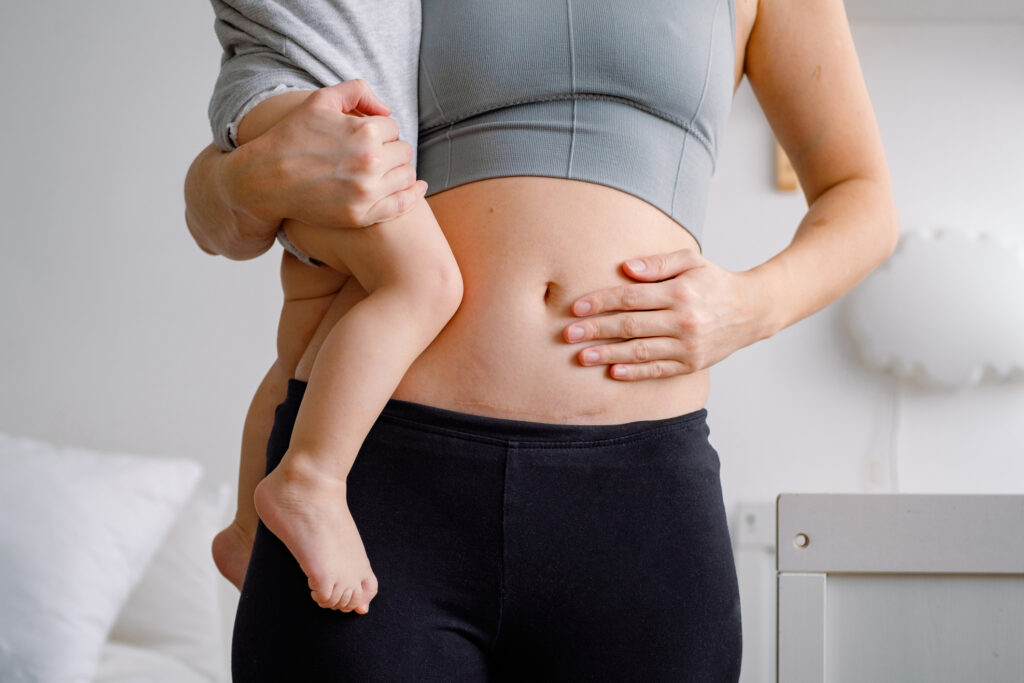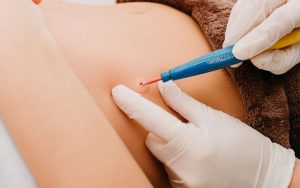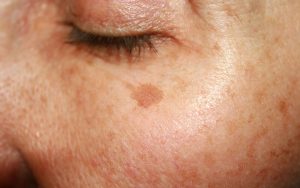After pregnancy, many women find that their bodies feel different, and that’s completely normal. While some changes settle with time, others may linger no matter how consistent you are with diet or exercise. If you’ve been considering non-surgical options to help contour areas like the lower abdomen, flanks, or thighs, you may have come across cryolipolysis, also known as fat freezing.
It’s a treatment that targets stubborn fat, but is it suitable after pregnancy? And when is the right time to begin? Here’s what to consider before taking that step.
What Is Cryolipolysis?
Cryolipolysis is a non-invasive body contouring procedure that works by cooling fat cells beneath the skin to a temperature that causes them to break down naturally over time. It’s commonly used to treat areas like the abdomen, flanks (“love handles”), thighs, and arms, especially those areas that may be resistant to diet and exercise.
It is not a weight-loss treatment but rather a method for targeted fat reduction. Results develop gradually over several weeks to months, as the body naturally clears the damaged fat cells.
When Is It Safe to Start After Giving Birth?
Every woman’s postnatal journey is different, and timing matters. In general, it is advisable to wait at least three to six months after delivery before considering cryolipolysis. This allows your body time to recover naturally, and for any pregnancy-related weight changes to stabilise.
If you’re breastfeeding, it is best to wait until breastfeeding has ended. While cryolipolysis is a non-invasive treatment and does not involve medication or injections, postnatal bodies are still undergoing hormonal changes, and it’s important to allow time for these to regulate before starting any aesthetic treatment.
As with any postnatal care decision, it’s always wise to speak with both your obstetrician and dermatologist before proceeding.
What Kind of Results Can You Expect?
Cryolipolysis can help reduce localised fat pockets, particularly in areas like the lower abdomen, where many women retain weight after pregnancy. However, it’s not a substitute for overall weight loss or muscle toning.
Results are gradual and subtle, usually becoming noticeable within 6 to 12 weeks. Most women benefit from more than one session, depending on the treatment area and individual goals.
Combining Cryolipolysis with Other Postnatal Care
To see the most meaningful and sustained results, cryolipolysis should be part of a broader postnatal wellness plan. This may include:
- Gentle exercise, such as Pilates or walking, once your doctor gives the go-ahead
- A balanced diet rich in nutrients to support recovery and energy levels
- Skincare for stretched or lax skin, which may include tightening treatments or topical products recommended by a dermatologist
It’s also important to prioritise rest and hydration, two things that often get overlooked during the early months of motherhood.
Is It Safe?
Cryolipolysis is generally well tolerated and suitable for many women. It does not involve cuts, needles, or anaesthesia. After treatment, some temporary side effects such as numbness, redness, or mild swelling can occur in the treated area, but these usually resolve on their own.
That said, not everyone is a candidate for fat freezing. Women with certain medical conditions or sensitivities to cold may need to explore other options. A consultation is essential to determine suitability.
Thinking About It? Speak to a Dermatologist First
Post-pregnancy bodies deserve care, patience, and understanding. If you’re considering cryolipolysis to support your recovery and body goals, the timing, safety, and treatment plan should all be personalised to your needs.
At Joyce Lim Skin & Laser Clinic, we provide guidance for women looking to explore non-invasive treatments after childbirth. Dr Joyce Lim takes a conservative, tailored approach, ensuring each treatment plan supports your skin and body in a safe and thoughtful way.
Book a consultation today to learn more about cryolipolysis and whether it’s the right next step for you.











